Chaga powder, derived from the Chaga mushroom, is simple to incorporate into your daily routine. To prepare Chaga tea, add 1-2 teaspoons of Chaga powder to hot water, let it steep for 5-15 minutes, then strain and enjoy. Alternatively, mix the powder into your daily smoothie, sprinkle it on your food, or add it to your skincare regimen.
The recommended daily dosage is 1-2 teaspoons, but always start with a small dose and gradually increase to see how your body responds. It's also important to note that pregnant or nursing individuals—or those with liver disease or other severe health conditions—should consult their doctor before using Chaga powder. Remember, high-quality Chaga powder should be sourced sustainably, preferably organically, and free from fillers and additives.
In the following article, we will delve deeper into Chaga powder, exploring its numerous health benefits, offering guidance on identifying top-quality Chaga products, and providing practical ways to incorporate this powerful superfood into your lifestyle. So please grab a cup of Chaga tea and join us in exploring the fascinating Chaga mushroom.
The Multifaceted Benefits of Chaga Powder
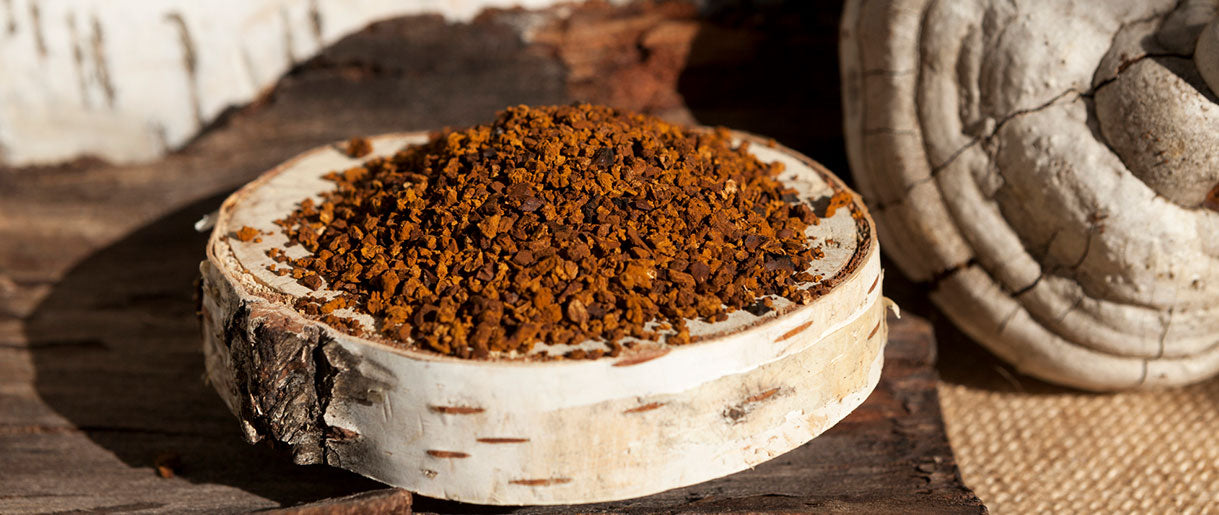
Chaga Mushrooms: A Nutritional Powerhouse
Chaga mushrooms, scientifically known as Inonotus obliquus, are an abundant source of vitamins, minerals, and other valuable nutrients. Grown primarily on birch trees in cold climates, this medicinal mushroom (Inonotus obliquus) is often ground into powder, enhancing its accessibility and versatility as a dietary supplement.
The nutritional content of Chaga mushroom powder is impressive, indeed. It contains B-complex vitamins, vitamin D, potassium, amino acids, fiber, copper, selenium, zinc, iron, and manganese. Additionally, it is rich in melanin, a pigment that supports skin and hair health. Because of its high melanin content, it's common for people to use Chaga powder for hair and skin health.
Chaga Mushrooms and Immune System Support
Among the health benefits of Chaga mushrooms, their impact on the immune system is particularly noteworthy. The compounds found within this superfood mushroom can help stimulate white blood cells, essential immune system elements.
Chaga mushrooms promote a healthy immune system and boost immunity by bolstering your body's defense mechanisms. Furthermore, beta-glucans in Chaga mushrooms support gut health, another vital aspect of maintaining a robust immune function.
Antioxidant Properties: The Inonotus Obliquus Advantage
Inonotus obliquus, commonly known as the Chaga mushroom, is teeming with antioxidants. These antioxidants help to neutralize harmful free radicals in the body, thereby protecting against oxidative stress and promoting overall health. The high antioxidant content in Chaga mushrooms is one of the many reasons they are considered one of the top superfood mushrooms.
Anti-Inflammatory Benefits of Chaga Mushroom
In addition to supporting a healthy immune system, Chaga mushrooms have also been shown to reduce inflammation(1). Thanks to compounds like betulinic acid, inotodial, and ergosterol peroxide, Chaga mushrooms are a natural remedy for inflammation, contributing to its reputation as a healing medicinal mushroom. Inonotus obliquus holds promise in reducing inflammation and promoting overall well-being.
Potential Anti-Cancer Effects of Chaga Mushrooms
Research into the potential anti-cancer effects of Chaga mushrooms is ongoing, but early findings are promising. Inonotus obliquus has been found to inhibit the growth of certain cancer cells in preliminary studies(2). While this doesn't suggest Chaga is a cure for cancer, it does align with its broader health benefits and underscores the potential therapeutic value of medicinal mushrooms like Chaga.
Unlocking Quality: A Guide to Identifying Superior Chaga Mushroom Powder
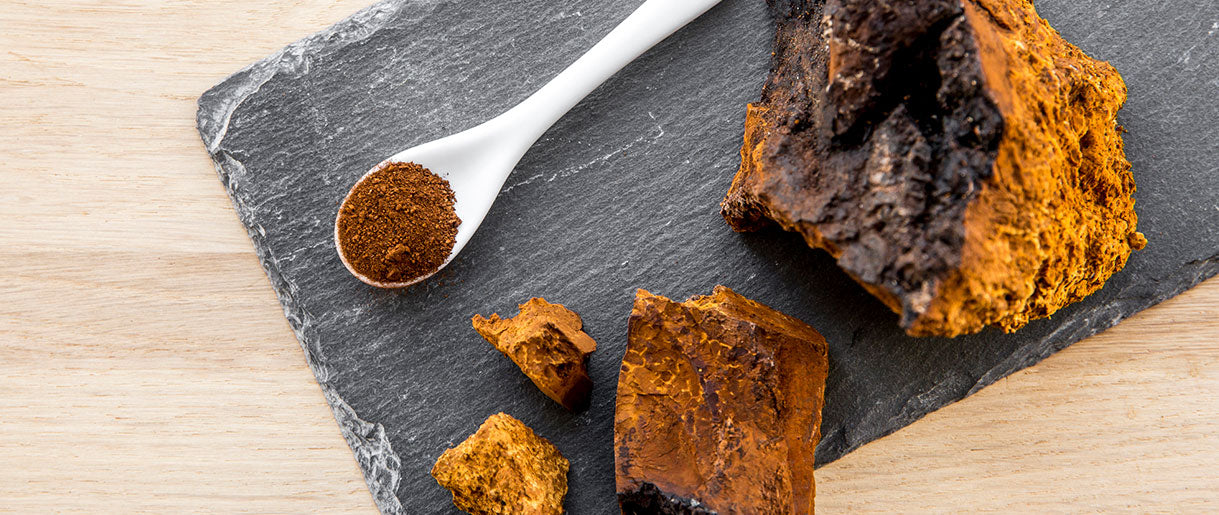
Unearthing the Criteria for High-Quality Chaga Powder
Selecting a high-quality Chaga mushroom powder is crucial to experiencing the fantastic benefits this traditional medicine has to offer. The first criterion to consider is the product's source. The best Chaga is harvested from cold climates, where the mushrooms have had to adapt to harsh conditions, thereby becoming more nutrient-dense.
The form of the Chaga is another crucial factor. Both Chaga extract and raw Chaga chunks can be used to create the powder. Chaga extract is a concentrated form made by extracting the beneficial compounds from the mushroom into a liquid, then drying it into a powder. This extract is often more potent than ground Chaga chunks. However, if the Chaga chunks are appropriately harvested and ground into a fine powder, they can also provide significant health benefits.
When selecting Chaga mushroom powder, check for a dark color, which indicates a high level of melanin—a powerful antioxidant. Also, the powder should have a slightly bitter taste, a characteristic feature of high-quality Chaga.
Avoiding Pitfalls When Purchasing Chaga Powder
One of the most common pitfalls when buying Chaga powder is not knowing the difference between Chaga extract and other forms of Chaga, such as raw Chaga chunks. As we've mentioned, the extract is often more potent and may be more effective for addressing health problems. However, high-quality Chaga chunks ground into a powder still hold significant value.
Another trap to avoid is purchasing Chaga products that mix Chaga with other mushrooms or additives. While these blends may still offer benefits, they dilute the potency of the Chaga. Always look for 100% pure Chaga mushroom powder or Chaga extract for maximum benefits.
Also, be cautious about claims that seem too good to be true. While Chaga offers numerous health benefits, it isn't a miracle cure for every ailment. Products making such claims may not be reputable. While Chaga has been used for centuries in traditional medicine, it's still being studied scientifically, and the Food and Drug Administration does not regulate dietary supplements.
Embracing the Versatility: Different Ways to Use Chaga Powder
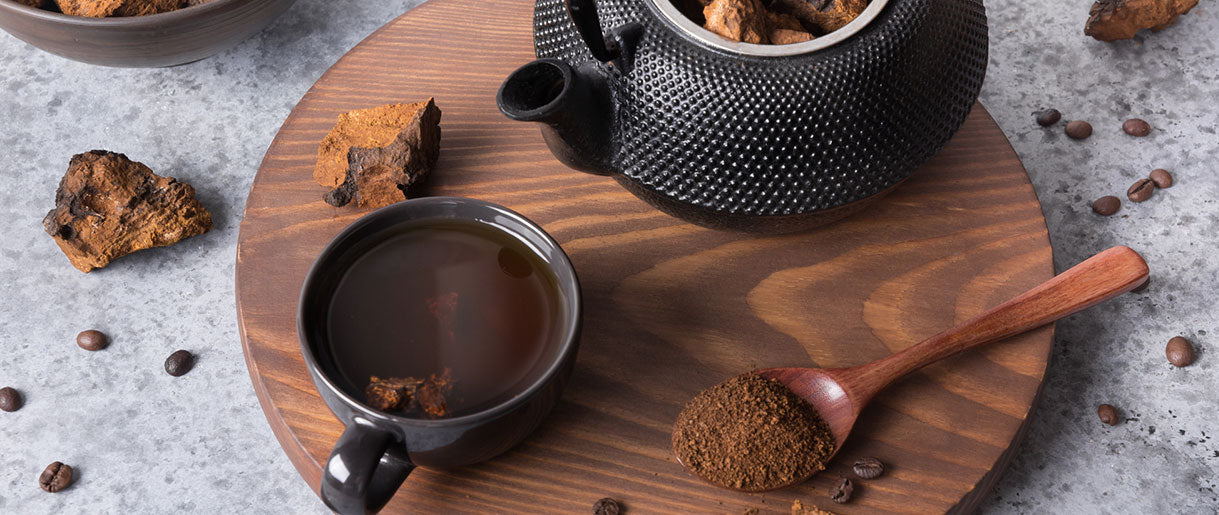
Traditional Methods of Using Chaga Powder
Traditionally, Chaga powder has been used to make Chaga tea, a herbal tea. Brewing tea with Chaga mushroom powder is simple. Here's a quick guide on how to use Chaga powder to make Chaga tea:
1. Heat water to just before boiling.
2. Place 1-2 teaspoons of Chaga powder into a tea ball or directly in the pot.
3. Allow the tea to steep for at least 5 minutes.
4. Enjoy your hot Chaga tea plain, or sweeten it with honey or maple syrup.
Taking Chaga tea regularly has been part of traditional medicine practices for centuries. The brewing process, which involves hot water extraction, allows the beneficial compounds in the Chaga powder's fruiting body to infuse the water, creating a potent brew. Always start with a small dose when making Chaga tea and gradually increase it to find what works best for you.
Innovative Uses of Chaga Powder
1. Chaga Tea: A Modern Take
While brewing tea with Chaga is the most well-known method, many modern adaptations and variations exist. Try adding cinnamon sticks to your Chaga tea or experimenting with Chaga chai tea for a warming twist as you enjoy its medicinal properties.
2. Supercharge Your Morning with Chaga Coffee
Combining your morning coffee with Chaga powder can provide an extra wellness boost. Just add a teaspoon of Chaga powder to your coffee grounds before brewing.
The resulting Chaga coffee carries a unique, earthy flavor, marrying the richness of coffee with the nutty tones of Chaga. Moreover, you won't have to worry about excessive caffeine since Chaga does not contain caffeine.
3. Refreshing Chaga Smoothie
A Chaga smoothie is a delightful option for those who prefer a cooler take. Here's a simple Chaga smoothie recipe: blend a teaspoon of Chaga powder with your choice of fruit, some Chia seeds for added texture, and your preferred milk or fruit juice. Chaga freezer pops, or Chaga popsicles, can also be made using a similar method for a refreshing, nutritious treat.
4. Cooking with Chaga Powder
Chaga powder can also be used as a supplement in your cooking. It can be sprinkled on salads, mixed into soups or stews, or incorporated into other recipes. This is a fantastic way to enjoy the benefits of Chaga and other medicinal mushrooms.
5. Chaga Powder in Skincare
Interestingly, Chaga powder isn't just for consumption. The high antioxidant content of the Chaga fruiting body makes it a valuable addition to skincare routines. Mix a small amount of Chaga powder into your daily moisturizer or make a DIY face mask for a nourishing skin treat. When used regularly, Chaga improves skin health, helping you retain a youthful look.
Navigating Safety: Precautions to Take When Using Chaga Powder
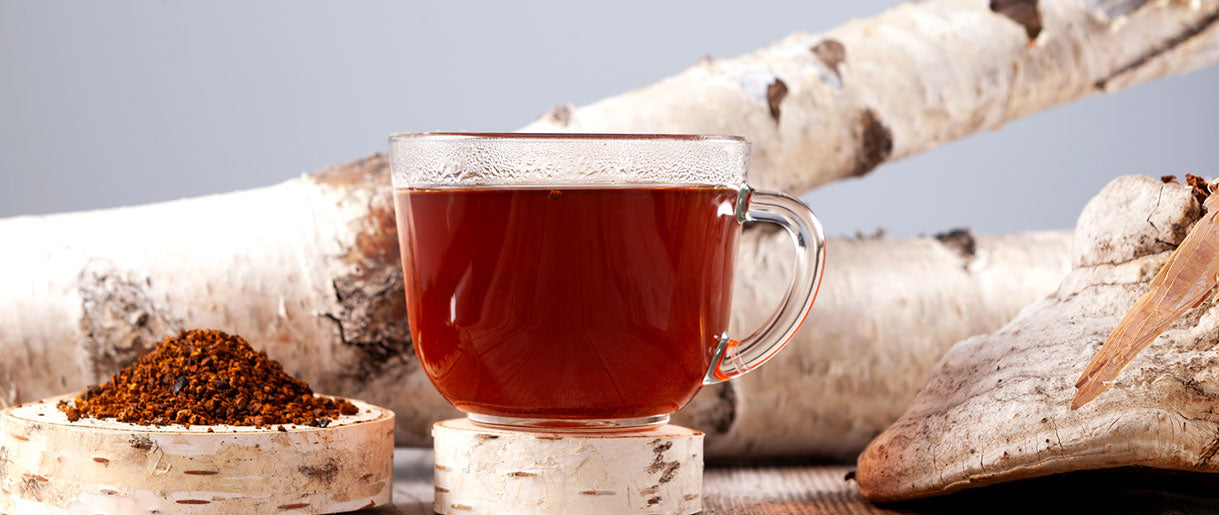
Potential Side Effects of Chaga Tea and Supplements
While Chaga tea and Chaga supplements are generally safe for most individuals, there are a few potential side effects. The most commonly reported side effects of consuming Chaga include upset stomach, frequent urination, and changes in bowel movements. These effects are usually mild and often subside as your body adjusts to the use of Chaga.
Additionally, some evidence suggests that Chaga may lower blood sugar. Therefore, if you have diabetes or low blood sugar, use Chaga cautiously and carefully monitor your blood sugar levels. The same caution applies to individuals with high blood pressure, as Chaga may lower blood pressure levels.
Who Should Avoid Chaga Tea?
Certain individuals should avoid using Chaga. Pregnant and breastfeeding women should refrain from using Chaga, as there isn't enough information on how it might affect these groups. Additionally, individuals with autoimmune diseases should avoid using Chaga, as it may stimulate the immune system, potentially causing the disease to become more active.
Also, if you're allergic to other types of mushrooms, you may react to Chaga. It's always a good idea to start with a small amount when taking Chaga tea to see how your body responds. You can then adjust the Chaga mushroom dosage later while taking note of its impact on your body.
Interactions of Chaga with Medications and Treatments
Chaga may interact with certain medications and treatments, so it's essential to consult your healthcare provider before starting to use Chaga, especially if you are on medication. As mentioned, Chaga may lower blood sugar, so using it with diabetes medication can result in blood sugar levels that are too low. Similarly, because Chaga may lower blood pressure, using it with medications for high blood pressure could lead to blood pressure that's too low.
FAQs About How to Use Chaga Powder
What Is The Best Time Of Day To Consume Chaga Powder For Optimal Benefits?
The best time to consume Chaga powder for optimal benefits can depend on personal factors such as your schedule, diet, and specific health goals. However, many prefer to consume Chaga powder in the morning, mixed into a morning beverage like coffee or tea, or as part of a breakfast smoothie. Starting your day with Chaga mushroom tea can provide a boost of antioxidants and other beneficial compounds to support your immune system throughout the day.
Others might take Chaga in the afternoon for a mid-day boost or in the evening to take advantage of its potential calming effects. Remember, everyone's body can react differently, and it might take some experimenting to find the best time for you. As always, it is recommended to consult with a healthcare provider before incorporating any new supplements into your routine.
Can Children Safely Consume Chaga Mushroom Tea Or Powder?
Chaga mushroom tea or powder is generally considered safe for most people, but its effects on children have not been extensively studied. Because children's bodies are smaller and their immune systems are still developing, they may respond differently to dietary supplements than adults.
It's also important to remember that Chaga has the potential to interact with other medications and affect blood sugar and blood pressure levels. While these effects are usually mild in adults, they could potentially significantly impact children.
Therefore, it's recommended that parents consult with a pediatrician or another healthcare provider before giving Chaga, or any other dietary supplement, to children. This will help ensure the child's safety and provide an opportunity to discuss the potential benefits and risks.
Can I Use Chaga Powder Topically For Skin Conditions?
Yes, Chaga powder can be used topically and may benefit the skin due to its high antioxidant content. Antioxidants can help protect the skin from damage by free radicals, potentially improving skin health and appearance.
In some cases, Chaga has been used in skincare products or DIY face masks to help with conditions like acne, eczema, and psoriasis. However, research on the topical application of Chaga is still limited, and more studies are needed to understand its effects fully.
Before using Chaga powder topically, test a small amount on your skin to ensure you do not have an allergic reaction. Also, it's always recommended to consult with a healthcare provider or a dermatologist before starting any new skincare treatment, especially for those with sensitive skin or pre-existing skin conditions.
Key Takeaways
Chaga powder, derived from the Chaga mushroom (Inonotus obliquus), is a potent superfood revered for centuries in traditional medicine and is increasingly recognized in modern health circles. Its robust profile of antioxidants, nutrients, and potential immune-boosting properties underscores its value in our daily health regimen.
From brewing a soothing cup of Chaga tea, enhancing your morning coffee, blending it into a nutritious smoothie, or even integrating it into your skincare routine, the versatility of Chaga powder use is impressive. Each method of consumption brings its unique benefits, providing different ways to incorporate this powerhouse supplement into your life.
Reflecting on our journey with Chaga, we've noticed that consistent use has contributed to a sense of overall wellness, underlining that small, daily steps can lead to significant health transformations over time. This isn't to say that Chaga is a miracle cure-all. However, its potential benefits combined with a balanced diet and lifestyle can contribute to better health.
If you've already embarked on this path or are about to, we'd love to hear about your experiences. How are you incorporating Chaga into your health regimen? What benefits have you noticed? Share your thoughts in the comment section below. Together, we can further unravel the mysteries and benefits of this remarkable mushroom.
References
- The Anti-Inflammatory Properties of Chaga Extracts Obtained by Different Extraction Methods against LPS-Induced RAW 264.7, (1)https://www.ncbi.nlm.nih.gov/pmc/articles/PMC9268247/
- Continuous intake of the Chaga mushroom (Inonotus obliquus) aqueous extract suppresses cancer progression and maintains body temperature in mice, (2)https://www.ncbi.nlm.nih.gov/pmc/articles/PMC4946216/




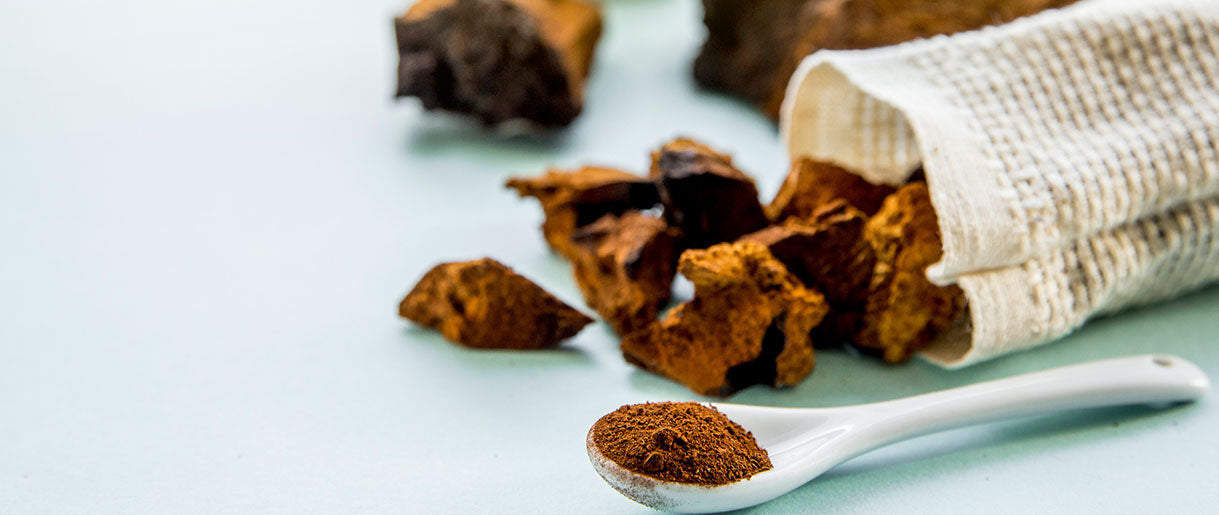




Let Us Know Your Comments